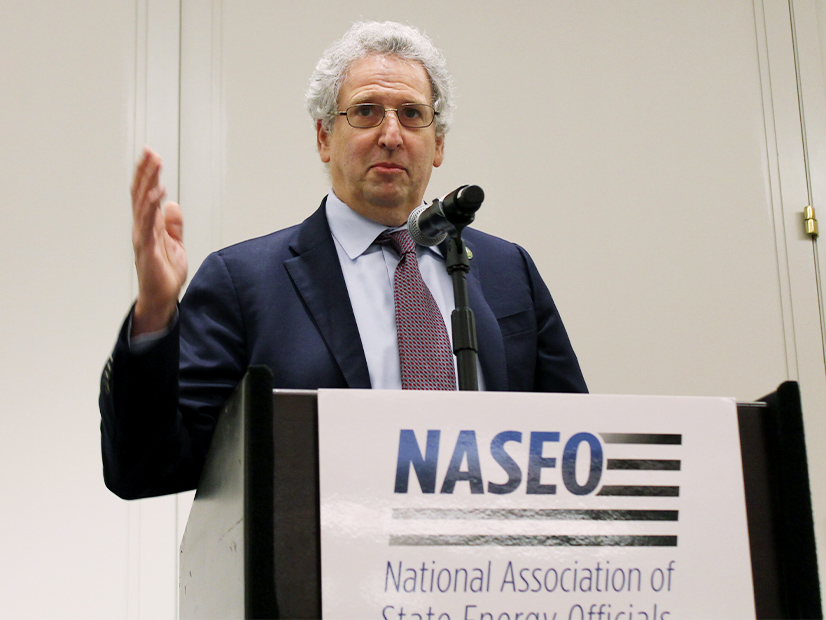
WASHINGTON — FERC Chair Richard Glick said Wednesday he is hoping to issue a final rule out of the commission’s Advanced Notice of Proposed Rulemaking (ANOPR) on transmission planning and cost allocation by the end of the year or early 2023 (RM21-17).
Speaking at the National Association of State Energy Officials’ (NASEO) annual Energy Policy Outlook Conference at the Fairmont Hotel in Georgetown, Glick gave attendees eating their lunches a high-level overview of what the commission is examining as part of the proceeding, which began last July. The commission received hundreds of comments by mid-October, most agreeing that U.S. transmission planning needs to be more proactive as more renewables seek to interconnect to the grid. (See FERC Tx Inquiry: Consensus on Need for Change, Discord over Solutions.)
“I’m very hopeful that in the very near future, we’ll have a Notice of Proposed Rulemaking, which is the next step in the regulatory process, and then hopefully a final rulemaking by the end of the year,” Glick said. “We’ll see if we get there. We have a lot to do, but there really is a pressing need here to act. Sometimes the regulatory process seems to take years, and with the way the law works, sometimes it’s important that it does take years. But we’re seeing how much we can expedite the process and move forward with the rulemaking.”
Asked about Glick’s timeline at a Northeast Energy Bar Association panel discussion Thursday, former FERC Chair Joseph Kelliher was skeptical, citing data that “the average time from the first step to a final rule … was 23 months.”
“It’s taken a maximum of 34 months in one case, and the fastest of the rules [Order 890] was 17 months,” he said.
Kelliher also noted that the ANOPR resulted in three separate statements, two of which he said “read like dissents.”
“I find that looking at history, it’s impossible, frankly, for the commission to issue a [broad] final rule by December or January,” he said. “So I think it’s either going to take longer, or the scope has to change and has to be narrowed, or perhaps has to be broken up into different orders.”
Much of the NASEO conference was focused on how states will use the federal dollars they are going to receive from the Infrastructure Investment and Jobs Act, enacted in November. But tucked into the law, with its billions for energy and transportation infrastructure, was a provision giving FERC backstop siting authority over transmission projects, which Glick called “the elephant in the room.”
Under the law, if state regulators deny them approval for a project, utilities can file a petition with FERC asking it to overturn the ruling. Many long-distance, interstate transmission project proposals have failed because of a single state rejecting them. Transmission policy experts have long argued for backstop siting authority, as there is wide agreement that interstate lines are needed to meet urban demand for renewable energy from rural areas.
Glick downplayed the significance of the authority, but the audience was dubious.
“We’re going to wait to see how this works out,” he said, which prompted nervous laughter from the audience. Glick paused with a smile, before saying, “I understand that there’s a lot of angst about it at the state level. … But I kind of question whether you’re going to see utilities out there come to FERC and say, ‘I want you to reject what my state commission just did.’ I think it’s going to be difficult for utilities to do that.”
At that there was a wave of murmurs through the audience.
Glick emphasized that FERC and the states are working together on transmission issues. He pointed to the Joint Federal-State Task Force on Electric Transmission, formed by the commission and the National Association of Regulatory Utility Commissioners. The task force will hold its second meeting, focused on cost allocation, at NARUC’s Winter Policy Summit next week.



